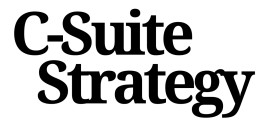
Understanding the Role of Trust in Leadership
The Vital Role of Trust in Leadership Dynamics
In today's rapidly evolving business landscape, trust stands as a fundamental pillar underlining the essence of effective leadership. As organizations navigate through complex challenges and a hybrid work environment, leaders are increasingly tasked with establishing and maintaining trust within their teams. It is no longer just a nice-to-have attribute but a strategic imperative for leaders aiming for organizational success.
Trust in leadership fosters an environment where open communication becomes the norm rather than the exception. It lays the groundwork for psychological safety, where team members are more willing to express innovative ideas, knowing they are safe from negative repercussions. This trust-centered culture enhances not only individual engagement but also collective team performance. It encourages employees to feel more comfortable in their work environment, ultimately driving organizational success.
Emotionally intelligent leaders understand that trust is built through consistency in transparent leadership practices and genuine communication. They recognize that embedding these elements into the organizational fabric ensures members feel valued and respected, creating a foundation for authentic leadership and continuous learning.
Furthermore, cultivating trust within teams also affects decision-making processes. Leaders who can communicate transparently and involve their teams in decisions promote a sense of ownership and accountability. This trust transparency is critical as it aligns everyone with the organization's goals, making strides toward sustainable success.
Building trust is not without its challenges. However, the payoff is significant, providing a culture where every team member is motivated to contribute to the collective goals of the organization. As leaders steer their teams through the complexities of modern-day work, focusing on trust as a cornerstone of leadership becomes a vital strategy for success.
The Importance of Transparency in Corporate Strategy
Transparency as a Strategic Imperative
In the modern corporate landscape, transparency has evolved to become a strategic imperative for organizations aiming to foster a high-performance culture. Authentic leaders understand that transparency is not merely a buzzword but a critical component of effective leadership. The key lies in how leaders communicate and make decisions with their teams, ultimately guiding them towards achieving organizational success. Transparency in leadership practices encourages open communication and trust among team members. This is especially vital in hybrid work environments, where maintaining clear and transparent channels of communication is more challenging yet equally important. When leaders proactively share insights about the organization's goals, challenges, and successes, they not only build trust but also create a sense of belonging among employees. Moreover, transparency in decision-making processes empowers employees to contribute their perspectives, leading to innovation and continuous learning within the company. This open environment fosters psychological safety, allowing team members to express their ideas without fear of negative consequences. Transparent leadership ensures that each member of the organization feels valued and respected, which is essential for driving sustainable success. Yet, transparency should not compromise the confidentiality of sensitive information. Leaders must strike a delicate balance, ensuring that they maintain transparency while safeguarding the organization's critical data. For more insights on fostering a culture of transparency and trust in leadership, you may explore our cultivating a high-performance culture guide.Balancing Transparency with Confidentiality
Striking the Right Balance: Transparency Meets Confidentiality
In today’s rapidly evolving corporate landscape, achieving the delicate balance between transparency and confidentiality is imperative for leaders striving to foster trust and transparency within their organizations. While open communication and transparency are pivotal for creating psychological safety and promoting a culture of trust, leaders must also navigate the complexities of protecting sensitive information and maintaining confidentiality.
A key challenge for leadership is determining what information should be shared to foster a transparent culture without compromising strategic advantages or violating privacy obligations. To achieve this equilibrium, leaders can establish clear guidelines for what constitutes confidential information versus data that benefits from open dissemination. This requires a nuanced understanding of the organizational culture and the specific contexts in which transparency is expected and valued.
Employing transparent communication strategies is crucial for leaders to maintain this balance. Transparent leadership involves clear and consistent messaging that reinforces the values and principles of both transparency and confidentiality. By doing so, leaders can nurture an environment where team members feel empowered to participate in decision-making processes while being cognizant of the boundaries around proprietary or sensitive information.
Furthermore, transparency leadership leverages emotional intelligence to recognize and respect individual differences. Authentic leadership, characterized by genuine intentions and honest communication, is more likely to encourage employees to embrace the duality of transparency and confidentiality in their work environment. By prioritizing continuous learning, leaders can remain adaptive and improve their transparency practices to support teams in becoming more innovative and successful.
In conclusion, balancing transparency with confidentiality is an ongoing leadership practice that demands careful consideration and strategic communication. By fostering a culture of trust and implementing clear guidelines, leaders can ensure that their teams benefit from the advantages of a transparent work environment while safeguarding critical organizational interests.
Building a Culture of Trust and Transparency
Fostering an Environment of Trust and Transparency
Creating a culture of trust and transparency starts with leaders exemplifying authentic leadership principles. This involves open communication, emotional intelligence, and transparent communication with team members. Leaders who prioritize transparency in their day-to-day interactions lay a solid foundation for trust within the organization.
The key to achieving this culture lies in embedding transparent leadership practices into the organization's core strategy. Authentic leaders encourage continuous learning and foster a work environment where employees feel valued and heard. By doing so, they cultivate a space that supports innovation, enhances decision making, and drives organizational success.
Moreover, transparency is not just about sharing information openly but also about building psychological safety. For teams to thrive, they need to operate in a setting where team members feel safe to express ideas and concerns without fear of reprisal. This kind of trust among employees leads to a dynamic and engaged workforce, even in a hybrid work setup.
Leaders play a crucial role in weaving a culture of trust transparency throughout all levels of an organization. By championing open communication and authentic engagement, they encourage teams to collaborate more effectively and aim higher, paving the way for success.
Challenges and Solutions in Implementing Transparent Leadership
Overcoming Barriers to Transparent Leadership
Implementing transparency in leadership is not without its obstacles. One of the primary challenges faced by organizations striving for transparency is the balance between being open and maintaining necessary confidentiality. This requires leaders to employ sound judgment in their decision-making processes, ensuring that while transparency is prioritized, sensitive information is safeguarded.
The pivotal role of emotional intelligence cannot be overstated. Leaders equipped with this skill are more adept at reading the organizational environment and can better gauge the appropriate level of openness in their communication. This fosters a culture where employees feel safe to express their thoughts, contributing to a psychological safety net that enhances the overall work environment.
Building Trust through Consistent Practices
Trust doesn't happen overnight; it requires a concerted effort from the leadership team. Consistent transparent communication practices ensure that team members are informed and feel valued. This authenticity in leadership not only builds trust but also promotes continuous learning and adaptation, essential for organizational success.
Authentic leaders who openly share successes and setbacks create a robust trust culture. When leaders admit mistakes, it encourages employees to take calculated risks, driving innovation and contributing to the organization’s success. It’s crucial that leadership fosters an environment where transparent leadership is the norm, not the exception.
Addressing the Dynamics of Hybrid Work
The shift towards hybrid work models poses additional challenges to maintaining transparency and trust. Leaders leading in such environments must leverage technology to keep communication lines open and ensure that remote team members remain an integral part of discussions. Effective leadership practices in this context include regular check-ins, virtual town halls, and using digital tools that facilitate open communication.
Ultimately, the journey towards a culture of trust and transparency requires commitment and a strategic approach. Leaders need to be proactive in identifying innovation opportunities and adapting their strategies to meet the evolving needs of a hybrid work environment. Emphasizing transparency as a cornerstone of modern leadership can transform challenges into opportunities for growth and enhance overall organizational success.
Case Studies: Successful Implementation of Trust and Transparency
Real-World Applications of Transparent Leadership
Implementing trust and transparency within an organization is a complex journey. Yet, numerous companies have successfully navigated this path, offering valuable lessons for leaders aspiring to foster such an environment. These case studies illuminate the practical aspects of embedding trust and transparency into the organizational fabric.
Case Study 1: Achieving Balance in Transparency and Confidentiality
One prominent example of balancing transparency with the need for confidentiality is within the tech industry, where innovation thrives. A leading tech company managed to maintain transparent communication with its teams while safeguarding its intellectual property. This was achieved by setting clear boundaries on what constitutes private information versus what can be openly shared. Leaders there have invested in continuous learning to evolve their leadership practices, ensuring team members always know the 'why' behind decisions. This approach fosters a culture of trust and innovation, allowing employees to feel more engaged and included.
Case Study 2: Building Cultural Resilience through Open Communication
In the finance sector, a giant corporation focused on enhancing open communication across all levels of its hierarchy. By leveraging authentic leadership and promoting psychological safety, the company was able to create an environment where employees felt valued and heard. Regular feedback loops and transparent communication about organizational changes were implemented. This practice not only improved morale but also contributed to a more robust work environment where collaboration flourished. The success lay in the leader's ability to communicate with emotional intelligence, motivating teams by making them part of the decision-making process.
Case Study 3: Navigating Transparency in Hybrid Work Environments
Amidst the shift to hybrid work environments, companies have faced challenges in maintaining team spirit and cohesion. One progressive firm tackled this by formalizing transparent leadership as a key strategy. This involved transparent communication across digital platforms and regular check-ins to address team members' concerns. In doing so, the leader's role was redefined as a facilitator of information and promoter of a collaborative culture. The results were significant—an increase in trust leadership and organizational success, as employees felt connected regardless of their physical location.
These examples demonstrate that, while challenges exist, they can be mitigated through strategic leadership practices. A commitment to fostering a culture of trust and transparency can lead to remarkable outcomes, as long as leaders remain dedicated to their role as facilitators of open, honest communication. This dedication is foundational to overcoming the hurdles of implementing transparent leadership and achieving long-term organizational success.














